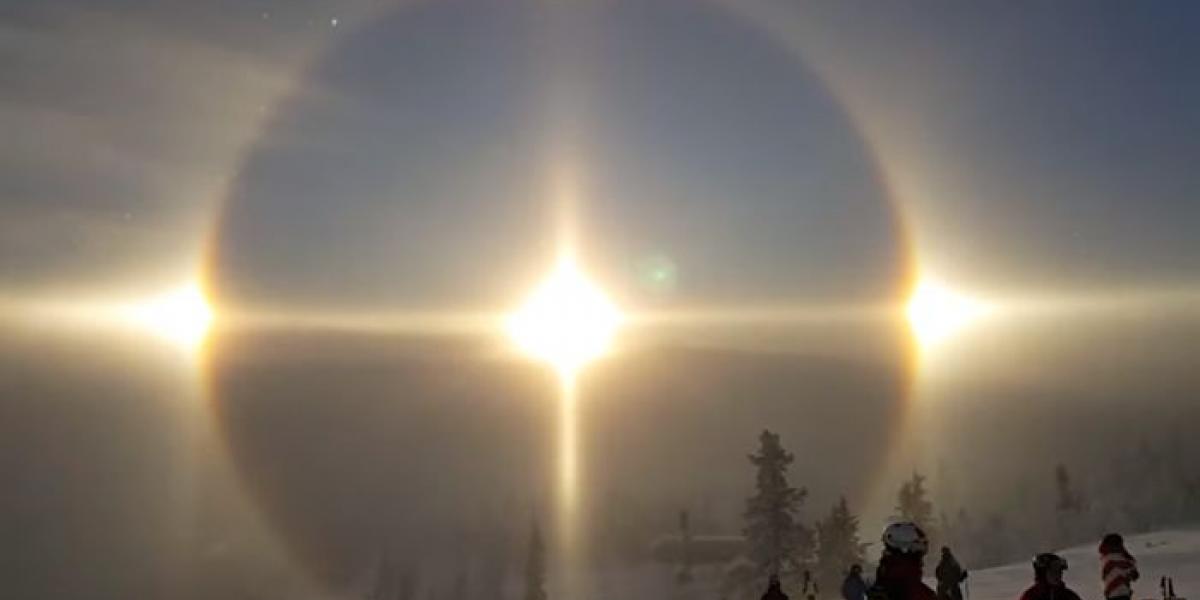Submitted by Alusiv on
A sun halo is an amazing phenomena of light and refraction that occurs in the right conditions. NASA explains the science behind it:
“Sometimes it looks like the Sun is being viewed through a giant lens. Water may freeze in the atmosphere into small, flat, six-sided, ice crystals. As these crystals flutter to the ground, much time is spent with their faces flat and parallel to the ground. During this alignment, each crystal can act like a miniature lens, refracting sunlight into our view and creating phenomena like parhelia, the technical term for sundogs.
Visible in the center is the most direct image of the Sun, while two bright sundogs glow prominently from both the left and the right. Also visible is the bright 22 degree halo - as well as the rarer and much fainter 46 degree halo - also created by sunlight reflecting off of atmospheric ice crystals. The atmospheric effect enveloped the low winter sun with a corona, known as a 22 degree halo. They form as sunlight is refracted in millions of hexagonal ice crystals suspended in the sky.”
View the video here.




